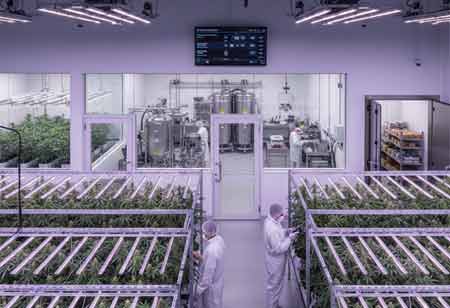Thank you for Subscribing to Cannabis Business Insights Weekly Brief
Potential Of Effective Leukemia Treatment With Cannabinoids
A new study confirms that cannabinoids, a group of active chemicals in cannabis, can effectively kill leukemia cells.

By
Cannabis Business Insights | Friday, January 17, 2025
Stay ahead of the industry with exclusive feature stories on the top companies, expert insights and the latest news delivered straight to your inbox. Subscribe today.
Many cannabinoids have been revealed to fight leukemia cells successfully.
Fremont, CA: A new study confirms that cannabinoids, a group of active chemicals in cannabis, can effectively kill leukemia cells. They also discover that the combination of chemicals and the order they are given is important. The findings will undoubtedly open the door to more effective treatments.
Possibilities of effective leukemia treatment With Cannabinoids
Cannabinoids, alias phytocannabinoids, act as cannabinoid receptors in the brain. The most prominent of these chemicals, and one of the most psychotropic, is tetrahydrocannabinol (THC).
To date, there have been exceeding 100 cannabinoids detected, all with various properties and chemical profiles.
And over recent years, the possible anti-cancer properties of cannabinoids have come into focus.
Laboratory and animal studies have shown that specific cannabinoids hinder tumor growth by encouraging cell death, lowering cell growth, and obstructing the growth of blood vessels that supply the tumor.
Cannabinoids and leukemia
Many cannabinoids have also been revealed to fight leukemia cells successfully. Leukemia is a cancer of the bone marrow or another organ that produces blood.
Earlier research has shown that some of these chemicals, when combined, become even more potent killers of cancerous cells.
Based on a study, Researchers found that cannabidiol and THC, when utilized alone, killed leukemia cells. Still, when employed in conjunction, their potency was greatly improved; the whole is beyond the sum of the parts.
They also revealed that a primary dose of chemotherapy succeeded by cannabinoids enhanced overall results against the leukemia cells. Uniting chemotherapy with cannabinoids gives better results than chemotherapy alone or combined with cannabidiol and THC. Yet, this greater potency was only noticed if the cannabinoids were provided after the chemotherapy and not the other way around.
Enhancing future treatment of leukemia
These findings are expected to enhance the efficacy of leukemia and cancer treatments. They are also expected to lower the effect of chemotherapy treatment on the patient.
The secondary effects of chemotherapy can be harsh; they involve hair loss, mouth sores, nausea and vomiting, diarrhea, and a greater risk of infection. Using cannabinoids could allow clinicians to lessen the dose of chemotherapy while holding its anti-cancer abilities.
Endurance and chemotherapy success rates for different cancers
Chemotherapy is a strong treatment that includes taking medications to impair cancerous cells. The objective is to hinder these cells from dividing and multiplying.
Cancer survival rates
Cancer survival rates are one method to display how effective different treatments, comprising chemotherapy, can be.
A survival rate is the percentage of people who live for a definite amount of time after a cancer diagnosis.
Survival rates can also aid people in understanding their outlook as they present details regarding the likely results of people with similar cancers.
Yet, it is important to remember that different factors impact survival and chemotherapy success rates. Most of these factors differ from person to person.
Cancer grade
Cancer grade measures how unusual the cancer cells seem under a microscope. More abnormal cells are prone to grow and spread at a faster rate.
Cancer stage
The cancer stage shows how large a tumor is and how far its cells have disseminated. A doctor can employ various systems to determine what cancer stage has reached.
They may employ the following 0–5 scaling system:
• Stage 0: The abnormal cells are present but haven't spread.
• Stages 1, 2, and 3: Cancer is there. In more advanced stages, tumors are larger and have spread to nearby tissues more extensively.
• Stage 4: Cancer has been distributed to other areas of the body.
Researchers who gather data to find out cancer statistics may utilize the following terms to explain the cancer stage:
• In situ: The abnormal cells are present but haven't spread.
• Localized: Cancer has not yet spread besides where it first developed.
• Regional: Cancer has disseminated to close lymph nodes, tissues, or organs.
• Distant: Cancer has disseminated to distant parts of the body.
Other factors
Other factors that can impact the success of chemotherapy include:
• age
• general health
• any other medical conditions






